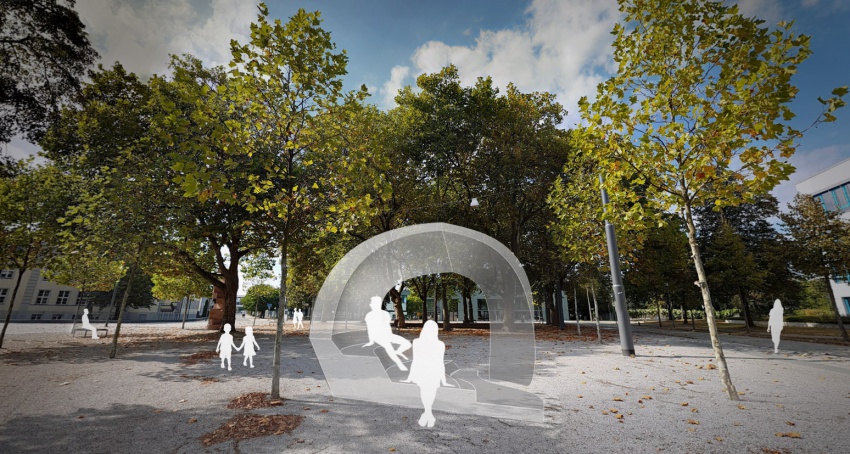Difference between revisions of "Msc2G4:Main"
| Line 28: | Line 28: | ||
<h2>100 years Bauhaus pavilion 2.0</h2> | <h2>100 years Bauhaus pavilion 2.0</h2> | ||
<p> | <p> | ||
| − | Celebrating the 100 years of the Bauhaus gives the opportunity to build, express and translate the influences of new technologies from this century into a design for a pavilion. Focusing on the integration of computational design with robotic production and assembly to achieve a performance-based design. Creating a space that is designed to shelter its visitors from the sun and rain and | + | Celebrating the 100 years of the Bauhaus gives the opportunity to build, express and translate the influences of new technologies from this century into a design for a pavilion. Focusing on the integration of computational design with robotic production and assembly to achieve a performance-based design. Creating a space that is designed to shelter its visitors from the sun and rain and exhibit virtual or physical artefacts. The pavilion provides interaction with its visitors due to a certain level of intelligence by extracting real-time data from its environment by sensors. While the architecture of the pavilion relies on new principles of design creating constant variation and structural and climatic optimisation. |
</p> | </p> | ||
[[File:Impressie.jpg | 850px]] | [[File:Impressie.jpg | 850px]] | ||
Revision as of 23:28, 11 March 2019
MSc3 Group 4
Students: Arav Kumar, Erik Bakker, Leander Bakker, Max Latour
100 years Bauhaus pavilion 2.0
Celebrating the 100 years of the Bauhaus gives the opportunity to build, express and translate the influences of new technologies from this century into a design for a pavilion. Focusing on the integration of computational design with robotic production and assembly to achieve a performance-based design. Creating a space that is designed to shelter its visitors from the sun and rain and exhibit virtual or physical artefacts. The pavilion provides interaction with its visitors due to a certain level of intelligence by extracting real-time data from its environment by sensors. While the architecture of the pavilion relies on new principles of design creating constant variation and structural and climatic optimisation.

